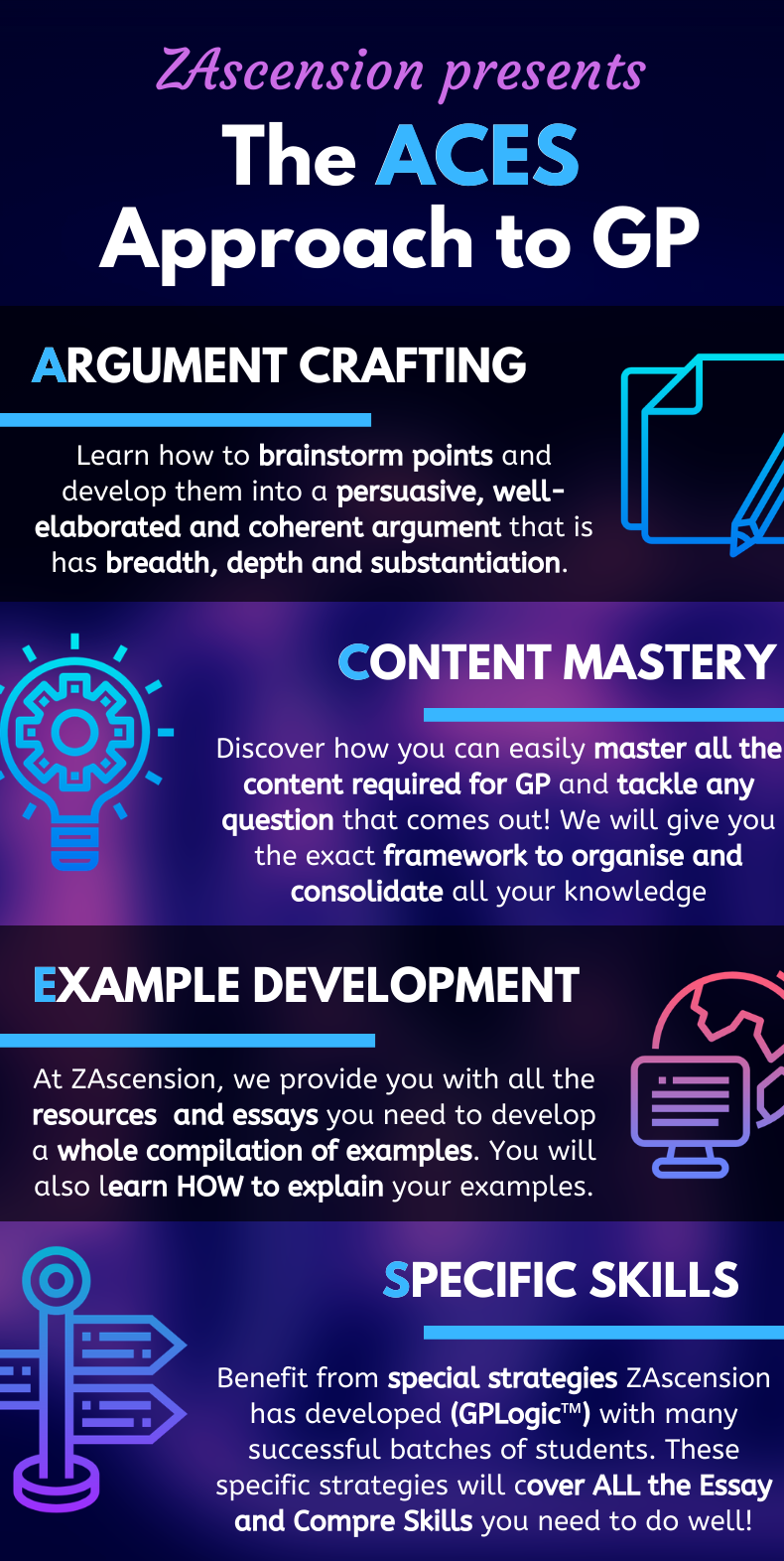Context for 2024 Paper 2 Comprehension Passages + Key Arguments
This space is to provide a quick overview (namely for others who have not sat for the paper). I am focusing on the new syllabus with 3 passages. The old syllabus also looks at the same issue, just without passage 3 and instead with a longer passage 2. The Compre topic this year is: Working from Home. I would now outline all the possible quotes that can be discussed from each of the passages. Note that this is once again just a reference, it does not mean that you are definitely wrong if you had chosen a different quote. These are recommended because they encompass key arguments that the authors have presented. How do we know what quote to choose?
Features of key arguments from Passages (i.e. how do we find the best quotes to respond to?):
- Clearly leans positive or negative (because they need to build towards the larger view the author has towards the issue – reading the title of each passage will clearly indicate their view)
- Has stronger vocabulary which allows the author to articulate complex ideas, while emphasising their stand
- Often elaborated over a few lines, or even across paragraphs. Repeating = the author finds it important
- May even be discussed in another passage, either supporting or undermining it. Again, the same issue recurring = many authors find this aspect of the topic important
- Should not be an example. Arguments must be focused on logic and opinion. They can draw from the significance of examples, but not the facts because facts are just descriptive!
Possible Arguments from 2024
Passage 1 (Disadvantages of WfH) + Passage 3:
- Lacking interaction: “Saying hello to the computer screen… brief moments of face-to-face communication… starvation of social interaction”
- P3 related – “loneliness and lack of social interaction… good friends at work… (not) socialising is difficult”
- Blurred lines: “Too difficult to distinguish between work life and home life… immense pressure for home workers, adversely affecting their mental well-being”
- P3 related – “Struggle to find a dedicated workspace… a child nudging you… means you’re not getting any work done” | “working remotely has affected his mental health… being at home all the time can be very depressing”
- Lacking amenities: “Not everyone has access to the space and resources that are conducive for work” (e.g. furniture, internet connection, infrastructure and space)
- Ineffective communication: “Emails do not lend themselves to this kind of spontaneous and effective communication that prevents confusion and nurtures relationships”
- Decreased creativity: “Negative impact on creativity and innovation that arises from an absence of personal contact… (lack) impromptu encounters”
Passage 2 (Advantages of WfH):
- Quality > Quantity + Work-life balance: “Break free from the 9 to 5 workday shackles… virtue of quality rather than quantity of work output”
- Freedom: “Sense of liberation… design and personalise our office spaces to create a comfortable ambience… dress how we want to”
- Privacy: “Increased productivity… office spaces at home can be arranged to minimise distractions… to guarantee privacy”
- Attention: “Can choose times when they take calls or read emails, thereby ensuring they give their complete attention to the work at hand”
Model AQ (Written by Mr Zach)
Passages 1 and 3 discussed the detriments for working from home which include lacking social interactions, blurred boundaries between work and private life, and homes being unconducive work environments. Passage 2, instead, examined the newfound freedom in telecommuting, and how it prioritises quality over just mindless hours. I believe that the benefits are much more pertinent for Singapore due to the growing preference for such arrangements, as well as government policies and infrastructure being available to cater to this gradual shift.
(Quote + Paraphrase) Passage 1 asserts that “not everyone has access to the space and resources that are conducive for work”. This means that homes may not offer the most productive and ideal environment for work because of the lacking amenities. (Mini Counter + Rebuttal: Optional) While there are grounds for this logic due to Singapore’s homes being notoriously small because of land scarcity, the increasing preference for telecommuting ultimately cannot be denied. (Evaluation + Feature of Singapore) Singaporeans have creatively found ways to either improve their home environment (as evidenced by local interior design trends of incorporating minimalist and stylish work spaces into new homes), or seek alternatives that enable flexible work arrangements. Hence, passage 1’s assertion paints an incomplete picture of the nuances in Singapore. (Eg + Exp 1) Recently, major companies in Singapore, like Amazon, Byte Dance, Grab have announced a withdrawal of work from home arrangements. While many of these companies justified their move by citing increased productivity due to the more favourable office environment, it has proven relatively unpopular among employees. Many Singaporeans affected by these changes have taken to social media to voice their grievances and criticise such a move as a regression back to outdated ideas around work. This comes from a fundamental disagreement that offices are superior spaces; most believe that homes are equally viable. Human Resource (HR) experts have also chimed in to express surprise because removing hybrid work goes against the increasing preference for telecommuting. (Eg + Exp 2) Furthermore, the growth of co-working spaces—like JustCo, WeWork, The Working Capitol—also evinces that Singaporeans are actively considering spaces apart from offices because they get to enjoy both freedom and privacy. It is noteworthy that the government’s investment in smart nation tech-driven initiatives, alongside providing strong public wi-fi, further enhances this experience, rendering non-traditional work environments a reality. Many new homes have also been thoughtfully designed to circumvent space issues to create an ideal workplace, especially since this was a new reality during the pandemic. (Link) All these contribute to a belief hybrid work arrangements outside of office are very well-received in Singapore, challenging potential concerns over its drawbacks.
(Quote + Paraphrase) Conversely, passage 2 contends that work from home enables employees to “break free from the 9 to 5 workday shackles… and makes a virtue of quality rather than quantity of work output”. This suggests that hybrid work arrangements value the deliverables and outcomes, rather than fixate on the actual hours poured into work. This is aligned with ideas of work-life balance that are fuelled by perceptions that employees can continue to be outstanding even as they have freedom to decide on their actual work arrangements. (Evaluation + Feature of Singapore) Such a sentiment echoes the changing realities of Singapore. Singapore, even as it maintains its reputation for work quality, embraces the general direction of progressively introducing flexible work arrangements, believing in its merits. (Eg + Exp 1) A case in point would be the new Tripartite Guidelines on Flexible Work Arrangement Requests that have been passed in 2024. Since the COVID-19 pandemic, working from home has become a new norm. Many Singaporeans have been vocal about the benefits of such changes, giving greater autonomy to them to decide how exactly they would work while still maintaining productivity that companies prize. After consulting with various stakeholders, the government has mandated that all employers in Singapore must fairly consider formal requests from employees for flexible work arrangements (FWAs) from end 2024. Importantly, companies are not allowed to reject such requests on baseless grounds like claiming that they do not believe in FWAs. This signifies the larger trend of a growing consensus that FWAs can engender high-quality work while providing employees more freedom. (Eg + Exp 2) We can also understand this by looking at ‘The Woke Salaryman’, a blog and social media platform illuminating new ideas readers should have about work, including prioritising work-life balance even as they remain productive and committed. Their comics on Instagram are often very popular because they resonate with the values that many have, especially among youths in the workplace. Their content constantly reminds Singaporeans that balancing self-care and work quality are possible, proposing that we can remain outstanding in our work even as we do not mindlessly dedicate our entire lives to it. Moreover, I would like to draw a parallel for this issue to trends of ‘quiet quitting’ and ‘lying flat’ that have emerged in the world for those who are disillusioned with the stresses of work in today’s world. In Singapore, these are not as pronounced but social media discourses often indicate that employees are prepared to quiet quit if companies remove FWAs. (Link) Therefore, it is evident that the benefits of hybrid working espoused in passage 2 are salient for Singapore.
In conclusion, all the passages have outlined a variety of arguments for and against working from home. The sentiments on the ground have been propelling the country and the government towards a direction of being able to better leverage on FWAs while not compromising work quality, and undertaking initiatives to make this a reality. Singapore is rapidly catching up to global trends and I am hopeful that work will be far more positive in the future as employees are given more autonomy, while employers are also amenable to such requests. Noteworthily, those who prefer office spaces can still have access to them, but it is ultimately about whether the choice is even available and that starts from acknowledging the benefits of hybrid work, which Singapore is thankfully doing.
10 Key Learning Points from a strong AQ
Observe these from the sample above 🙂
- Referencing the most important arguments discussed
- 1 BP should reference a positive argument while another BP discusses the negative argument
- Both BPs should touch on a different aspect of this Topic. For instance, BP1 looks at the environment whereas BP2 looks at quality vs quantity. We should not have both BPs looking at the same aspect because it will compromise scope!
- Precise and well-explained paraphrasing of the quoted ideas to show understanding
- Evaluative phrases that demonstrate critical thinking
- Insightful feature of Singapore that reflect a very nuanced understanding of the situation in Singapore
- Thoughtful links back to the author’s point to constantly engage with it, instead of digressing to only talk about Singapore (remember the A in AQ = Apply, apply to the local context!)
- Well-chosen examples that are major case studies, not just random statistics or speculative generalisations. These should also clearly relate to the Topic (in this case, WfH)
- Logic-driven and cogent arguments when we explain the examples, to show the significance of these facts. Specifically, how do these SG examples relate to the author’s arguments?
- Diverse perspectives in the examples (from the government, companies, employees, social media discourse, content creators etc.)
If you appreciate this piece and would like to learn more on how you can also replicate a high quality AQ, consider joining us in our weekly lessons (click to find out more on how you can also benefit!). We will learn all these and much more to conquer all the GP requirements. From our lessons, there will also be many more such samples available 🙂 And of course, lessons would include practices where you will also get individualised feedback from Mr Zach for your work, and you will know exactly what and how to improve!
______________________________________________________________________________________________________
Yay, congratulations to the J2s of 2024, because you have completed an important milestone. Good job on putting in your best effort for GP. Now it is time to take a short break and refocus your efforts on other remaining subjects. Stay motivated and stay confident 😄!!
______________________________________________________________________________________________________
If you found this helpful, do check out our GP Tips & Resources Telegram Channel! Click here to join. This channel is meant to act as a GP companion to share knowledge and help all students, regardless of whether they are a part of ZAscension. This resource features Tips of the Day, Answers to FAQs, Articles and many more. So if you enjoyed this article, this channel will definitely be useful for you 😃
Do share this article and also the Telegram channel with everyone you know who is also studying for GP, let’s share the good stuff so that we may all learn 🙂



